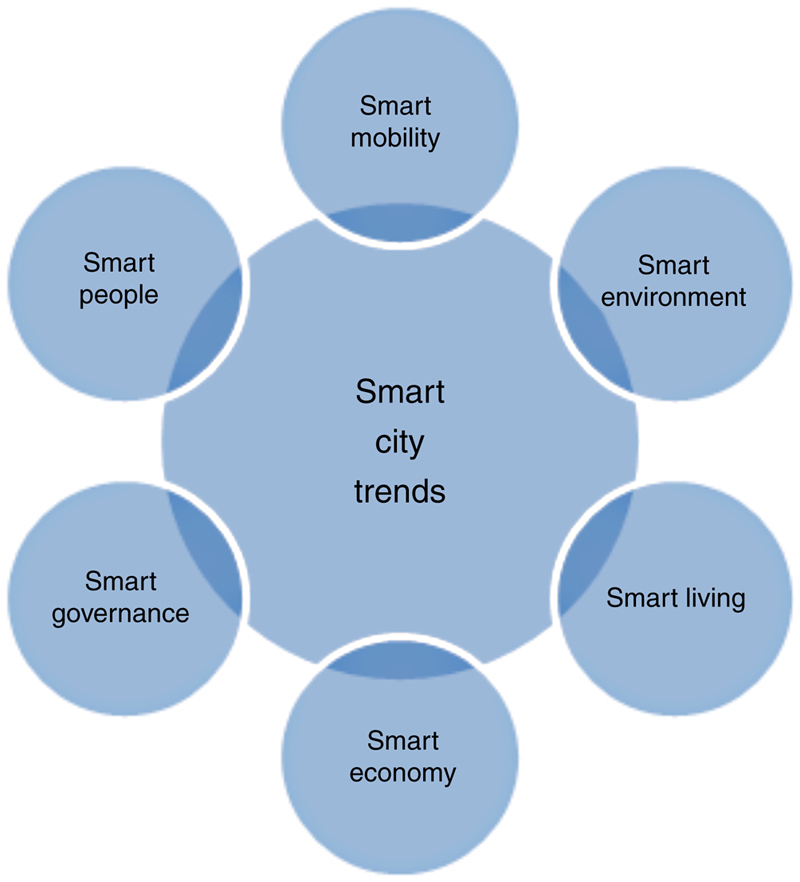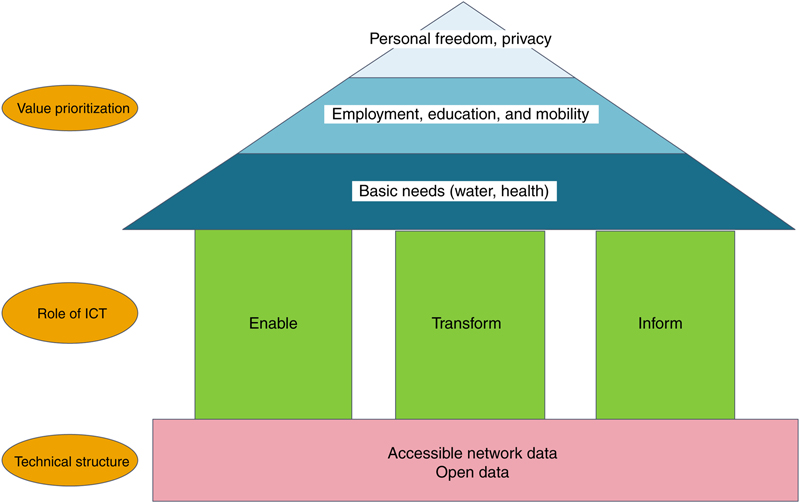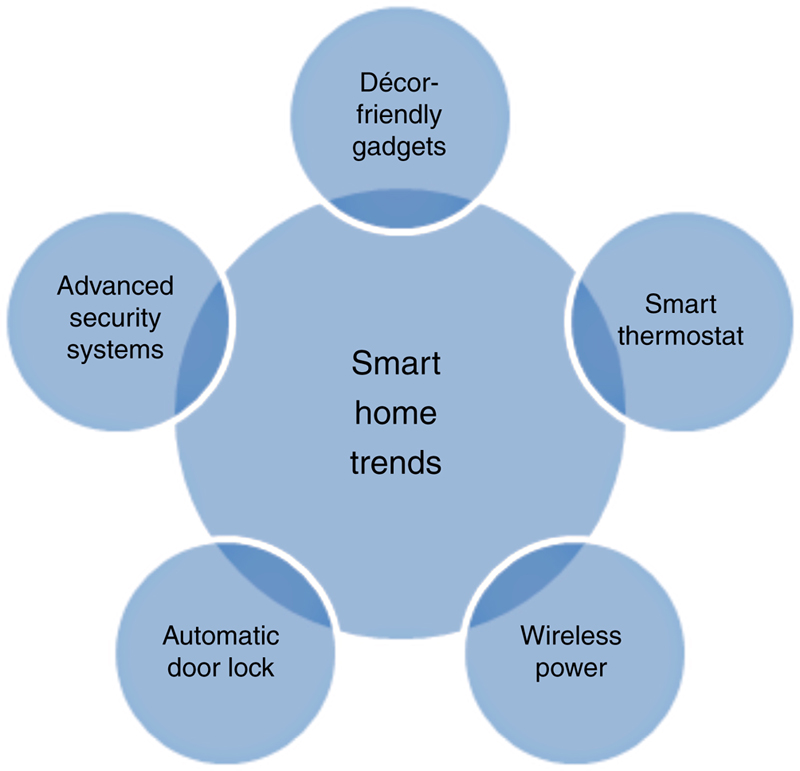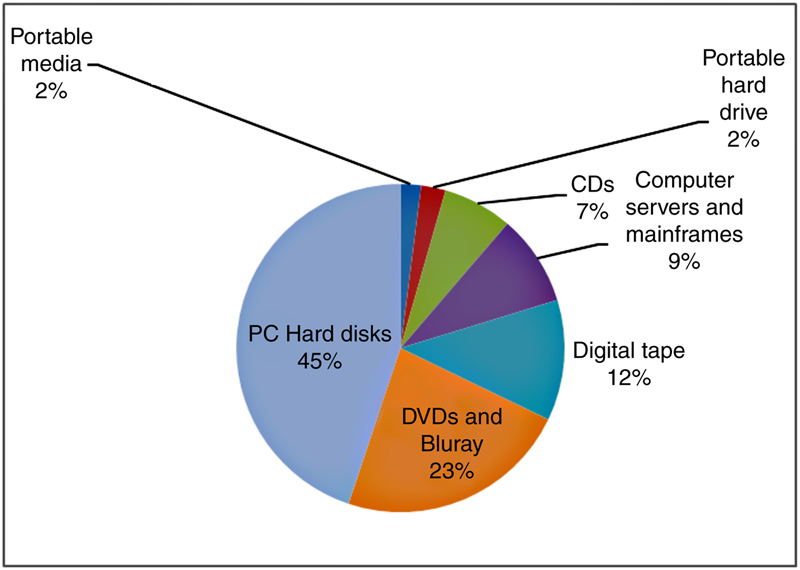Introduction and overview of key enabling technologies for smart cities and homes
* Department of Computer Science and Software Engineering, Monmouth University, West Long Branch, NJ, United States
† Department of Computer and Information, Fordham University, Bronx, NY, United States
** Department of Surveying & Geomatics Engineering, Al-Balqa’ Applied University, Salt, Jordan
Abstract
In the past three decades, the Internet has undergone major evolutions. It started as a content sharing platform with early websites, portals, and search engines. Information on the Internet became richer and more diverse, especially with the increase of users worldwide; the Internet is no longer connecting information but also connecting people. Social networks emerged in addition to other services such as voice over Internet Protocol (VoIP) and video chat that empowered the social web. This shift transformed the end user from a consumer of information to a major contributor and producer of data. This trend has taken on an exponential slope with the advent of smartphones and Internet of Things (IoT) systems. In addition to data, smartphone accelerated a shift in communications as well. A new communication mode has enabled information access anytime and anywhere where end users need to interact with their environment for basic daily tasks. For instance, in major metropolitan cities, calling a taxi service is now done at the push of a button using the mobile device through application services such as Uber. Having connected information with users at early stages and then users with other users through social web, the Internet is evolving to connect objects, homes, cities, and just about everything that is connectable and can benefit from being connected. This leads to an intelligent and context-aware platform that enables all kinds of smart services. In this chapter, we discuss this new trend of connected objects in the context of smart homes and cities, and their challenges, as well as perform a survey of related key enabling technologies.
Keywords
1. Introduction
2. Trends in smart cities and homes
2.1. Smart cities

2.1.1. Smart mobility and smart traffic management
2.1.2. Smart environment
2.1.3. Smart living
Table 1.1
Factors and Indicators for Smart Living in the Context of Smart City
| Indicator | Weighting (%) | |
| Cultural facilities | 3 | 14 |
| Health conditions | 4 | 14 |
| Individual safety | 3 | 14 |
| Housing quality | 3 | 14 |
| Education facilities | 3 | 14 |
| Touristic attractiveness | 2 | 14 |
| Social cohesion | 2 | 14 |
2.1.4. Smart economy
Table 1.2
Smart Economy Vectors
| Smart Economy Vector | Description |
| Innovative revenue models | A smart economy is efficient and relies heavily on nonpolluting energy sources. It is efficient and recycles through waste and produces enough energy to sustain its needs. Most importantly, a smart economy allows sustainable growth to its citizens. This is ensured through innovation and entrepreneurship. The 21st-century economy is technology driven [7]. Start-ups can launch new services using little investment but without compromising the overall added value of their product |
| Sharing economy | Sharing economy can take many forms, most notably, using ICT to provide city residents with the information needed to distribute, share, and reuse the excess capacity in goods and services. The collaborative consumption model uses mobile apps and online platforms to support these innovative ideas. We have witnessed multiple examples of such innovative endeavors lately such as Uber that runs the largest taxi fleet without owning any taxi vehicle, social lending and crowd sourcing platforms, peer-to-peer accommodation (airbnb), and car sharing or pooling, among others. Encouraging the private sector and in particular private citizens to take over traditional or once regulated fields such as transportation allows introducing innovation and offering new breed of services that go along with the advances in technologies witnessed by the city residents |
ICT, information and communications technology.
2.1.5. Smart governance

2.1.6. Smart people
Table 1.3
Factors and Indicators for Smart People in the Context of a Smart City
| Factor | Indicator | Weighting (%) |
| Level of qualification | 4 | 14 |
| Affinity to life learning | 3 | 14 |
| Social and Ethnic plurality | 2 | 14 |
| Flexibility | 1 | 14 |
| Creativity | 1 | 14 |
| Cosmopolitanism and open mindedness | 1 | 14 |
| Participation in public life | 1 | 14 |
2.2. Smart homes

2.2.1. Programmable and zone-based smart thermostat
2.2.2. Wireless power
2.2.3. Automatic door locks
2.2.4. Advanced security system
3. Challenges in smart cities and homes
3.1. Security
3.2. IoT challenges
3.3. Fragmentation of standards
3.4. Processing big data
3.5. Scalability
4. Survey of major key enabling technologies for smart cities and homes
4.1. Internet of things
4.2. Smart dust
4.3. Smartphones
4.4. Cloud computing
4.5. Big data and open data
